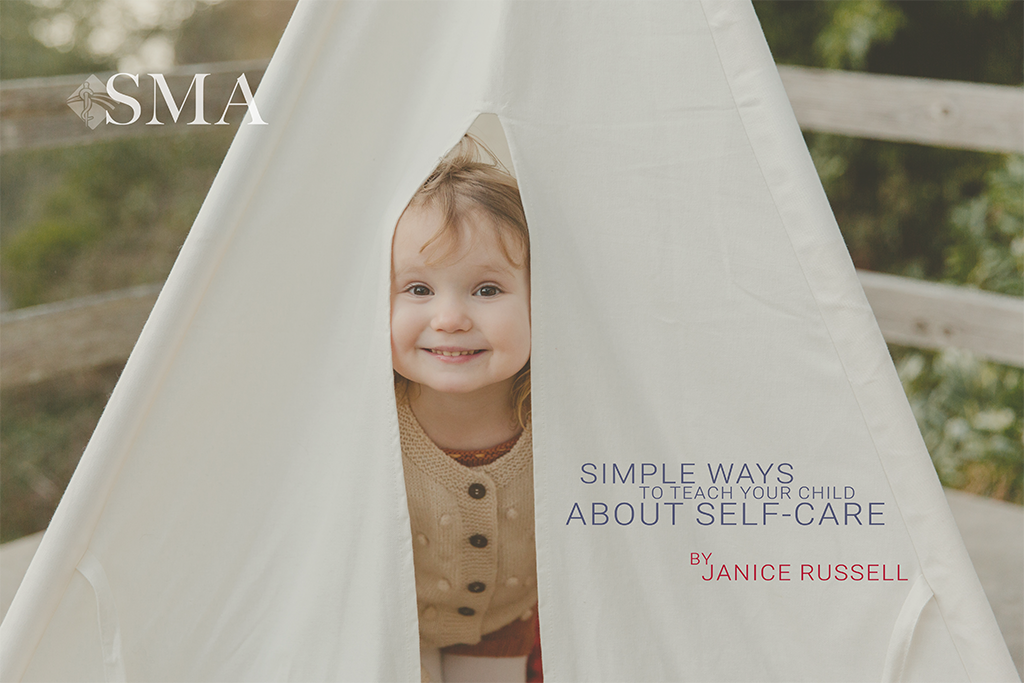
Simple Ways to Teach Your Child About Self-Care
By Janice Russell
Kids were dealing with isolation, cyberbullying, and other issues before the pandemic. But the restrictions and fear of a global health crisis made such issues even more prevalent among kids of all ages. Among other factors, limited in-person interactions, mask-wearing, and an increased reliance on virtual environments have contributed to more suicide attempts among children since early 2020.
In other words, self-care has never been more important — for adults and kids alike. If you want to learn how to introduce your child to healthy self-care routines, your first step is to start with yourself. Once you commit to being your kid's self-care role model, there are countless activities to try that can help them foster their health and well-being. SMA has listed a few tips to get you started!
Modeling Self-Care
It likely comes as no surprise that the most effective way to teach your child healthy self-care routines is to model them yourself. This means that you should try your best to foster your own physical, mental, and emotional health because your child will notice the steps you are taking. Along with abiding by a nutritious diet, try to find an exercise routine that fits your lifestyle and needs, and make sure you are getting adequate sleep each night.
Your child will also be able to tell if you are stressed out, which will influence their health and well-being. If work has you overwhelmed, look for ways to alleviate the stress (or at least reduce it).
If you work from home, you probably have more freedom to make changes to your work schedules than if you had a traditional desk job. Mixing up your routine can go a long way in making your day-to-day more interesting and reducing stress. For example, if you work from 9 a.m. to 5 p.m., consider working 8 a.m. until 4 p.m. a couple of days a week.
Creative Activities
Whether or not your child is naturally creative, they can benefit from activities and movements that provide an outlet for expressing their thoughts and emotions. For instance, try a few drawing, painting, coloring, or musical activities, and see if it doesn’t help their mood!
Fortunately, there are plenty of online resources for ideas and plans. Another activity to consider is dancing; whether you dance to a workout video together or hold an impromptu dance-off, something about moving and letting go does wonders for the soul.
Screen Breaks
Adults and children spend a lot of time staring at electronic screens. And if you have a teenager, it might seem like they are on their device than they are not. Encourage your child to spend time away from their phone, tablet, computer, or video games. Fill the space with holistic activities like cooking a meal, listening to music, patining, practicing yoga, or doing any other activity that can reduce stress and promote wellness.
Acts of Kindness
Despite how it sounds, self-care is not always all about the self. Doing things for other people allows us to take our minds off ourselves for a moment and make a difference in their lives. Consider signing your child up to volunteer at a local charity, or make a gift or offer a helpful service to their teacher, friend, or other important figures in their life.
Compassion Breaks
The next time your adolescent experiences a stressful event, show them how to acknowledge the challenging moment and explain how stress and struggles are common in life. This will show them that they are not alone while also allowing them to embrace the circumstances. Then, teach them to ask themself how they can be kinder to themself, whether it means reciting a self-affirmation or engaging in a fun and relaxing activity.
There is no getting around that mental health issues are on the rise since the beginning of the pandemic. If your child doesn’t know how to implement self-care in their life, now could be the ideal time to teach them. Consider the tips above for showing your kid how to foster their health and well-being. And keep looking for other ways to equip them with the mindset and habits to keep them thriving through the challenges ahead.
About the Author:
Janice Russell believes the only way to survive parenthood is to find the humor in it. She created Parenting Disasters so that parents would have a go-to resource whenever they needed a laugh, but also to show parents they aren’t alone. She wants every frazzled parent out there to remember that for every kid stuck in a toilet, there’s another one out there somewhere who’s just graced their parents’ walls with some Sharpie artwork!
Would you like to read more helpful content or learn about our medical organization? Visit SMA.org today!
